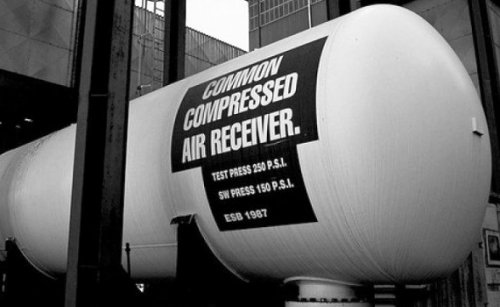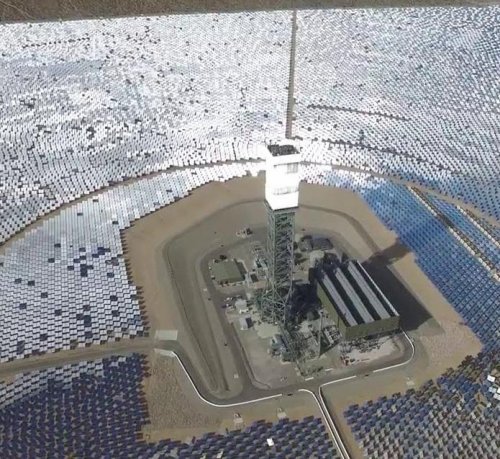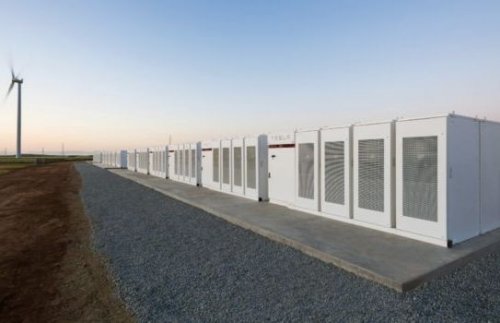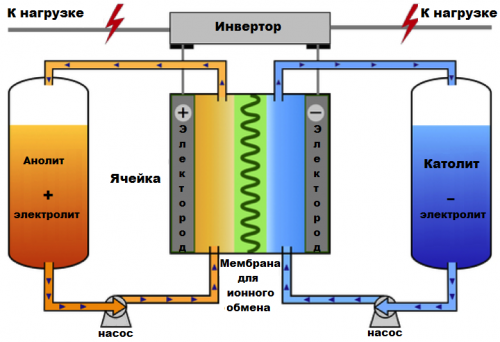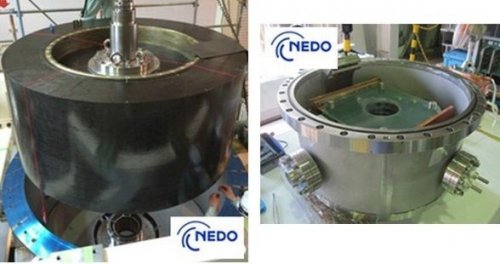Industrial energy storage devices
In the old days, the electrical energy obtained in hydroelectric plants was immediately delivered to consumers: lamps lit, engines ran. Today, however, as the power generation capabilities have greatly expanded, the question of efficient ways to store generated energy has been seriously raised in many ways, including various renewable sources.
As you know, during the day humanity spends much more energy than at night. The hours of peak loads in cities fall into strictly defined morning and evening hours, while generating plants (especially solar, wind, etc.) generate a certain average power that varies significantly at different times of the day and depending on weather conditions.
In such circumstances, it is not a bad idea for power plants to have some kind of back-up electricity storage that can provide the required power at any time of the day. Let's take a look at some of the best technologies to solve this problem.
Hydraulic energy storage
The oldest method that has not lost its relevance to this day. Two large water tanks are located one above the other. The water in the upper tank, like any object raised to a height, has a higher potential energy than the water in the lower tank.
When the power consumption of the power plant is low, at that time water is pumped into the upper reservoir by pumps. During peak hours, when the plant is forced to feed high power to the grid, water from the upper tank is diverted through the turbine of the hydrogenerator, thereby generating increased power.
In Germany, projects of this type of hydroaccumulators are being developed for their subsequent erection at the sites of old coal mines, as well as at the bottom of the ocean in spherical warehouses specially created for this purpose.
Energy storage in the form of compressed air
Like a compressed spring, compressed air injected into a cylinder is able to store energy in potential form. The technology was hatched by engineers for a long time, but was not implemented due to its high cost. But already very high levels of energy concentration are achievable during adiabatic gas compression with special compressors.
The idea is this: during normal operation, a pump pumps air into the tank, and during peak loads, compressed air is released from the tank under pressure and turns the turbine of the generator. There are several similar systems in the world, one of the largest developers of which is the Canadian company Hydrostar.
Molten salt as a thermal accumulator
Solar panels It is not the only tool for converting the sun's radiant energy.Solar infrared radiation, when properly concentrated, can heat and melt salt and even metal.
This is how solar towers work, where many reflectors direct the sun's energy to a salt tank mounted on top of a tower erected in the center of the station. The molten salt then releases heat to the water, which turns into steam that turns the generator's turbine.
So, before turning into electricity, the heat is first stored in a thermal accumulator based on molten salt. This technology has been implemented, for example, in the United Arab Emirates. Georgia Tech has developed an even more efficient device for thermal storage of molten metal.
Chemical batteries
Lithium batteries for wind power plants — this is the same technology as batteries for smartphones and laptops, only there will be thousands of such "batteries" in the storage for the power plant. The technology is not new, it is used in the US today. A recent example of such a 4 MWh plant is the one recently built by Tesla in Australia. The station is capable of delivering a maximum power of 100 MW to the load.
Leaking chemical accumulators
If in conventional batteries the electrodes do not move, in flow batteries the charged liquids act as electrodes. Two liquids move through a membrane fuel cell in which ionic interaction of liquid electrodes takes place and electric charges of different signs are generated in the cell without mixing the liquids. Stationary electrodes are mounted in the cell to supply the thus loaded electrical energy to the load.
So, as part of the brine4power project in Germany, it is planned to install tanks with electrolytes (vanadium, salt water, chlorine or zinc solution) underground, and a 700 MWh flow battery will be erected in local caves. The main goal of the project is to balance the distribution of renewable energy throughout the day to avoid power outages caused by lack of wind or cloudy weather.
Super flywheel dynamic storage
The principle is based on first converting electricity — in the form of kinetic energy of the rotation of the super flywheel, and, if necessary, back into electrical energy (the flywheel turns the generator).
Initially, the flywheel is accelerated by a low-power motor until the load consumption is peak, and when the load becomes peak, the energy stored by the flywheel can be delivered with many times more power. This technology has not found wide industrial application, but is considered promising for use in powerful uninterruptible power sources.


